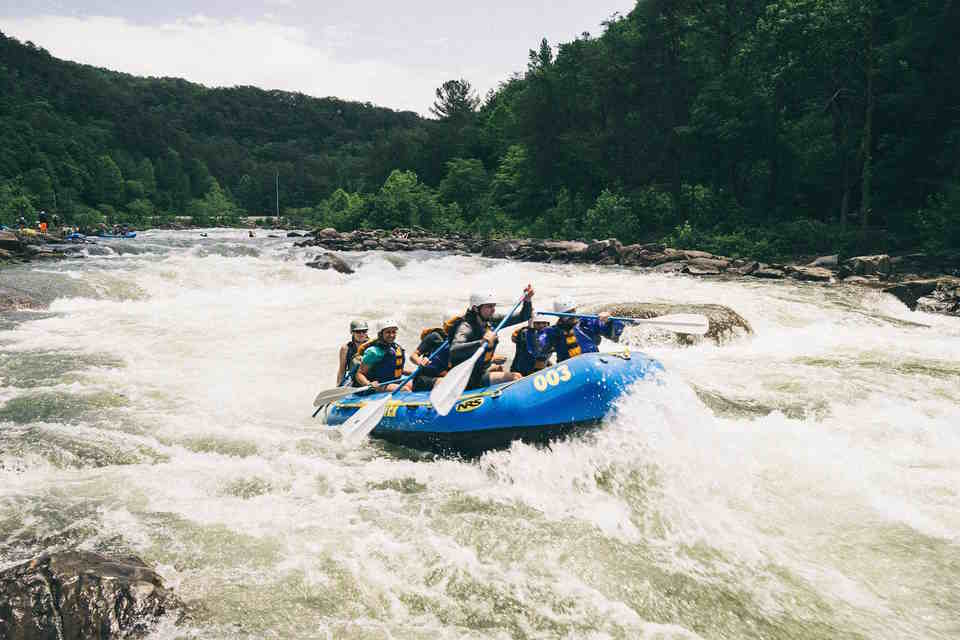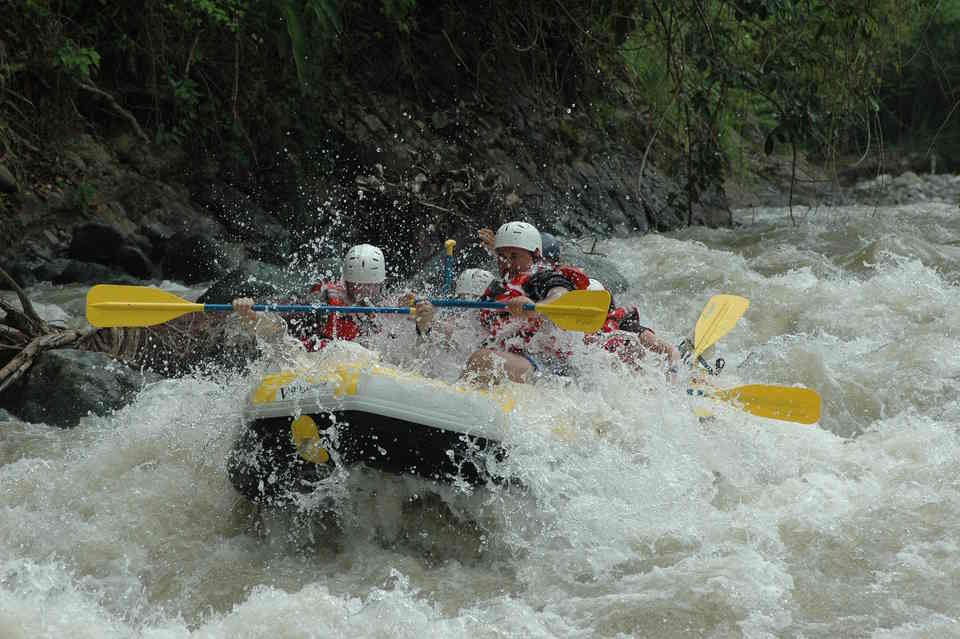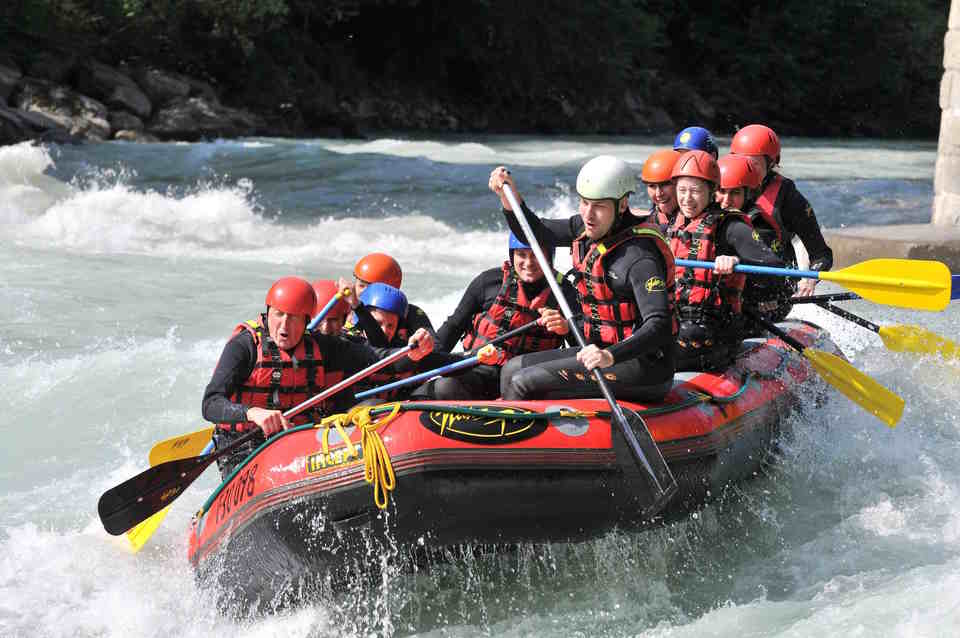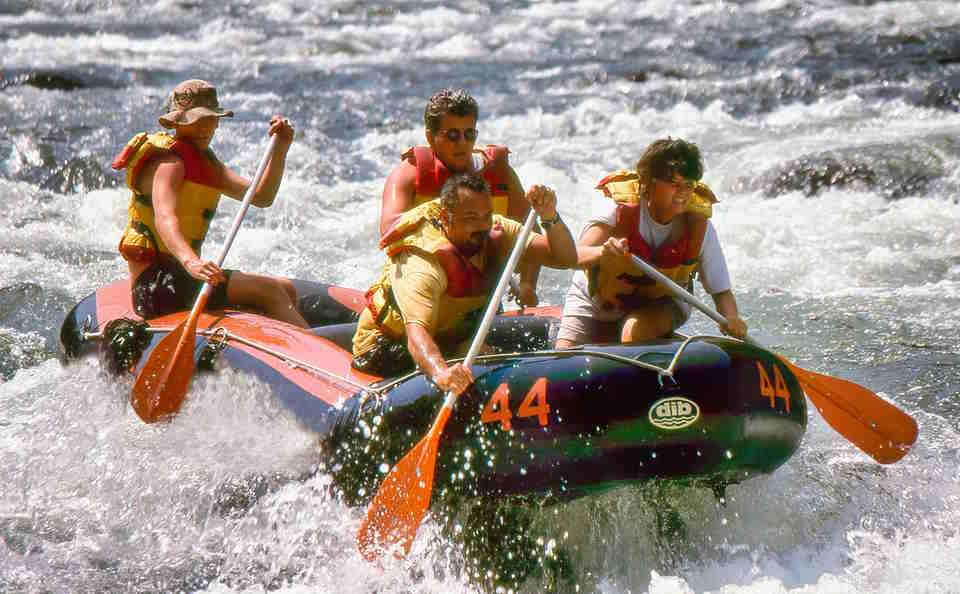Rafting is a thrilling and adventurous outdoor water sport that involves navigating through the rapids of a river in an inflatable raft. If you are planning to take on this exciting activity, you might be wondering how hard it is and what level of difficulty you can expect. We will answer some of the most commonly asked questions about rafting, including what the best age for rafting is, how wet you can get while rafting, and how to get in shape for it. We will also explore the health benefits of rafting and why it is a great workout that anyone can enjoy. So, let’s dive in and learn more about this exciting activity!
Introduction
Rafting can seem like an intimidating outdoor activity to some, and a thrilling adventure to others. But regardless of which camp you fall into, one question remains — is rafting hard? The answer is not a simple yes or no, as the difficulty level of rafting can vary depending on the river, the rapids, and the individual’s comfort level and experience. However, with the right preparation and mindset, rafting can be an enjoyable experience for all.
Before heading to the river, it’s important to assess your own fitness level and comfort with water. While some river trips may be suitable for beginners and families, others may require more experience and skill. It’s always a good idea to research the river you plan to raft and check the difficulty rating of the rapids. Rapids are usually rated on a scale of I to VI, with I being the easiest and VI being nearly impossible to navigate. If you’re a beginner, it may be a good idea to start with a lower difficulty level and gradually work your way up.
- It’s important to assess your own fitness level and comfort with water before heading to the river.
- Research the river you plan to raft and check the difficulty rating of the rapids.
- Start with a lower difficulty level if you’re a beginner and work your way up.
Another factor that can make rafting hard is the physical exertion required to paddle. While modern rafts are designed to be stable, and guides often help with maneuvering, paddling can be a tiring activity, especially if you’re not used to it. To make it easier on yourself, try to get in shape before your river trip. Focus on exercises that work on your upper body, core, and endurance. This will help you perform better and enjoy the experience without feeling too exhausted.
| Exercises to Get in Shape for Rafting | Duration | Intensity |
|---|---|---|
| Plank Variations | 30 seconds to 1 minute | Medium to High |
| Rowing Machine | 15-20 minutes | Medium to High |
| Push-ups | 3 sets of 10-15 repetitions | Medium to High |
| Cardio (Running, Cycling, Swimming) | 20-30 minutes | Low to Medium |
What Is the Difficulty of River Rafting?
River rafting is an exhilarating adventure sport that is enjoyed by many thrill-seekers across the world. This water sport is not just about paddling through the rapids of a river, but also about experiencing the breathtaking beauty of nature at its very best. River rafting can be an ideal way to break out of your daily routine, experience adrenaline rush, and have fun with your friends or family.
However, before you plan a river-rafting trip, you should know the difficulty levels of the rivers you are considering. The difficulty level of a river is based on several factors such as the volume of water flow, the number of rapids, the size of the waves, and the obstacles present in the river.
There are six difficulty levels of river rafting, ranging from Class I to Class VI. Class I rivers have the mildest flow and are the easiest to navigate, while Class VI rivers are considered too dangerous even for experienced rafters. Here’s a brief rundown of the difficulty levels:
| Class | Description |
|---|---|
| Class I | Mild river, easy navigation. |
| Class II | A few mild rapids, easy navigation. |
| Class III | Moderate river, rapids with moderate waves. |
| Class IV | Difficult river, intense rapids with large waves. |
| Class V | Expert level river, extremely difficult rapids, and high waves. |
| Class VI | Un-navigable and extremely dangerous river. |
If you are just starting out with river rafting, we recommend choosing Class I or II rivers. These rivers are perfect for beginners and kids. If you have previous rafting experience and are looking for more thrill, Class III and IV rivers can be the ideal choice. However, unless you are an experienced rafter with phenomenal physical fitness, we do not recommend taking on Class V or Class VI rivers. These rivers are the most challenging and can be life-threatening even to experienced rafters.
While the difficulty level of a river is an important factor to consider when planning a river rafting trip, it’s not the only one. You should also consider other factors like the season, water temperature, weather conditions, and the length of the trip. Remember to always follow safety precautions and listen carefully to the instructions of your guide.
What Is the Best Age for Rafting?
River rafting is an adventure that requires physical prowess and mental grit. With so many rafting companies offering different levels of difficulty, this activity is accessible to everyone willing to take the plunge. However, when it comes to age, people might have perceptions on who can and can’t do it. So, what is the best age for rafting?
Age should not be a limiting factor when it comes to river rafting. There is no age limit as long as you are physically fit and healthy enough to take on the bumps and swirls of the rapids. It’s not uncommon to see children as young as seven or eight years old enjoying a rafting trip. In some cases, even seniors aged 70 and above are up for the challenge.
However, it’s essential to consider your fitness level first before taking on the rapids. You need to be able to swim, climb back into the raft if you fall off, and paddle the raft in case the guide needs help. If you feel like you’re physically fit enough, you can go ahead and book a trip regardless of your age.
- The most important factors to consider when it comes to river rafting are experience, skill level and fitness.
- Children aged seven and older can go rafting, depending on their level of fitness and swimming ability.
- Safety precautions such as proper fitting helmets and life jackets must be followed regardless of age and skill level.
Furthermore, some rafting trips are designed to cater to specific age groups. For instance, there are family-friendly river trips that are suitable for children as young as five years old. These trips usually have calmer waters, and the guide ensures that children are situated in the safest part of the raft. If you are past your prime, you can opt for a more relaxed trip that offers stunning scenery and mild to moderate rapids that can still get your heart pumping.
| Age group | Considerations |
|---|---|
| Children aged 7 and up | Depending on fitness and swimming ability |
| Adults aged 18-64 | As long as you are physically fit and healthy |
| Seniors aged 65 and up | Check with a doctor before going on a trip, pick a more relaxing trip if necessary |
How Wet Do You Get Rafting?
Are you planning your next river rafting adventure and wondering how wet you’ll get? The answer is: it depends! Rafting is a water sport, so getting wet is unavoidable. However, the level of moisture you’re exposed to can vary based on factors such as the water conditions, the type of raft you’re using, and your position in the boat.
If you’re going on a calm river with small rapids, you’ll likely get splashed but won’t be completely soaked. On the other hand, if you’re tackling a rougher river with large drops and intense rapids, you can expect to get drenched. Some rafters even wear wetsuits or drysuits to stay warm and dry in these situations.
Bring a change of clothes:
- If you’re planning a full-day rafting trip, bring a change of clothes to change into after the adventure. You don’t want to be stuck in wet clothes for an extended period of time.
Your position in the boat can also affect how wet you get. If you’re sitting in the front of the raft or in a position where you’re likely to be hit by larger waves, you’ll get wetter than someone in the back of the boat. Additionally, the type of raft you’re using can influence how much water you’re exposed to. An open raft with no cover will obviously result in more water splashing into the boat compared to a covered raft.
| Water Conditions | Expectation of Wetness |
|---|---|
| Calm river with small rapids | Splashed, but not completely soaked |
| Rough river with large drops and intense rapids | Drenched, may need wetsuit or drysuit |
What Time of Day Is Best to Go Rafting?
If you are planning to go rafting, one of the questions you might be asking is what time of day is the best for rafting?
Well, the answer is not as straightforward as you might think. The best time of day for rafting depends on several factors.
- Weather conditions
- River flow rate
- Your schedule
So, let’s explore these factors to help you decide what time of day is best for your rafting adventure.
Weather Conditions
One of the most important factors to consider when deciding the best time of day for rafting is the weather conditions. Ideally, you want to choose a time when the weather is warm and sunny. This will not only make the experience more enjoyable, but it will also reduce the chances of hypothermia.
River Flow Rate
The river flow rate is another important factor to consider. When the water level is too high or too low, it can affect the quality of your rafting experience. Generally, the best time to go is when the river is at a medium level. This means there is enough water for a fun ride, but not too much that it becomes dangerous.
Your Schedule
Your schedule is another important factor to consider when deciding what time of day to go rafting. If you have a busy schedule, you might have to settle for the only time available that works for you. However, if you have some flexibility, it’s best to choose a time when there are fewer crowds.
| Time of Day | Crowds |
|---|---|
| Morning | Low |
| Afternoon | Medium |
| Evening | Low |
In general, mornings and evenings tend to have fewer crowds, while afternoons tend to be the busiest time of day for rafting.
How Do You Get in Shape for Rafting?
River rafting can be an exhilarating experience that requires physical strength and endurance. To fully enjoy rafting and not exhaust yourself easily, you need to be in great shape beforehand. The following tips will help you get in shape for your next rafting adventure:
- Work on your Cardio
To handle the physical demands of rafting, start with strengthening your lungs and heart. Therefore, incorporate exercises that enhance cardiovascular endurance in your workout routine such as cycling, running and swimming. - Strengthen Your Core
Rafting requires a lot of core muscles to keep balance and stay stable on the raft. Focus on exercises that target your abs and back, such as crunches, planks, and back extensions. - Build Upper Body Strength
You need upper body strength to paddle frequently for long periods and to navigate through rapids. Incorporate exercises that target your shoulders, arms and back, such as push-ups and weightlifting. - Practice Coordination and Agility
Rafting requires a lot of coordination and agility to avoid hitting rocks, paddle at the right time, and move swiftly. You can work on coordination and agility through exercises like jumping jacks, skipping rope and lateral jumps.
| Exercise | Target Muscle Group | Reps/Set |
|---|---|---|
| Cycling | Cardiovascular Endurance | 30 minutes |
| Crunches | Abs | 3 sets of 10-15 reps |
| Push-ups | Shoulders and Arms | 3 sets of 8-12 reps |
| Jumping Jacks | Coordination | 3 sets of 10-15 reps |
Remember, it’s important to start exercising regularly well before your rafting trip, and to choose exercises that work on the specific muscles you’ll need to use while rafting. Be consistent with your routine and you’ll be in great shape to tackle any river.
Is Rafting a Good Workout?
River rafting is a thrilling adventure sport that is sure to get your adrenaline pumping. It is an excellent way to experience the beauty of nature while challenging your rafting skills. But did you know that rafting also provides a great workout? Yes, that’s right! Rafting can help you burn calories, build upper-body strength, and improve cardiovascular health. We will explore how rafting is a good workout and how it can benefit your overall fitness.
When you go rafting, you will be working multiple muscle groups in your body. Rowing your raft against the current requires a lot of upper-body strength, making it an excellent workout for your arms, shoulders, and back. Additionally, the constant paddling helps to strengthen your core muscles, which are responsible for maintaining your balance and stability.
- Strengthening upper body muscles like arms, shoulders and back
- Strengthening core muscles
Rafting also gets your heart pumping, which improves your cardiovascular health. The continuous paddling, coupled with the rapid changes in water flow, causes your heart rate to increase, similar to doing cardio exercises. This aerobic workout helps to improve your endurance and overall health.
In addition to the physical benefits of rafting, it is also a great stress-reliever. The rush of adrenaline you experience while navigating through the rapids helps to release endorphins which are natural stress-relievers, leaving you feeling refreshed and rejuvenated.
| Benefits of Rafting as a Workout: |
|---|
| Strengthens upper body muscles |
| Strengthens core muscles |
| Improves cardiovascular health |
| Reduces stress |
So, if you’re looking for a fun and exciting way to stay fit, rafting may be just what you need. It provides a good workout for your entire body while allowing you to enjoy the beauty of nature. However, like any other physical activity, it’s important to prepare your body beforehand. Doing some cardio and strength-training exercises before your rafting trip can help to prevent muscle soreness and injuries.
Remember to stay hydrated during your rafting trip and wear appropriate gear such as helmets and life jackets to ensure your safety. With these precautions in mind, you’re all set for an amazing rafting experience that not only challenges your skills but also benefits your overall health.














